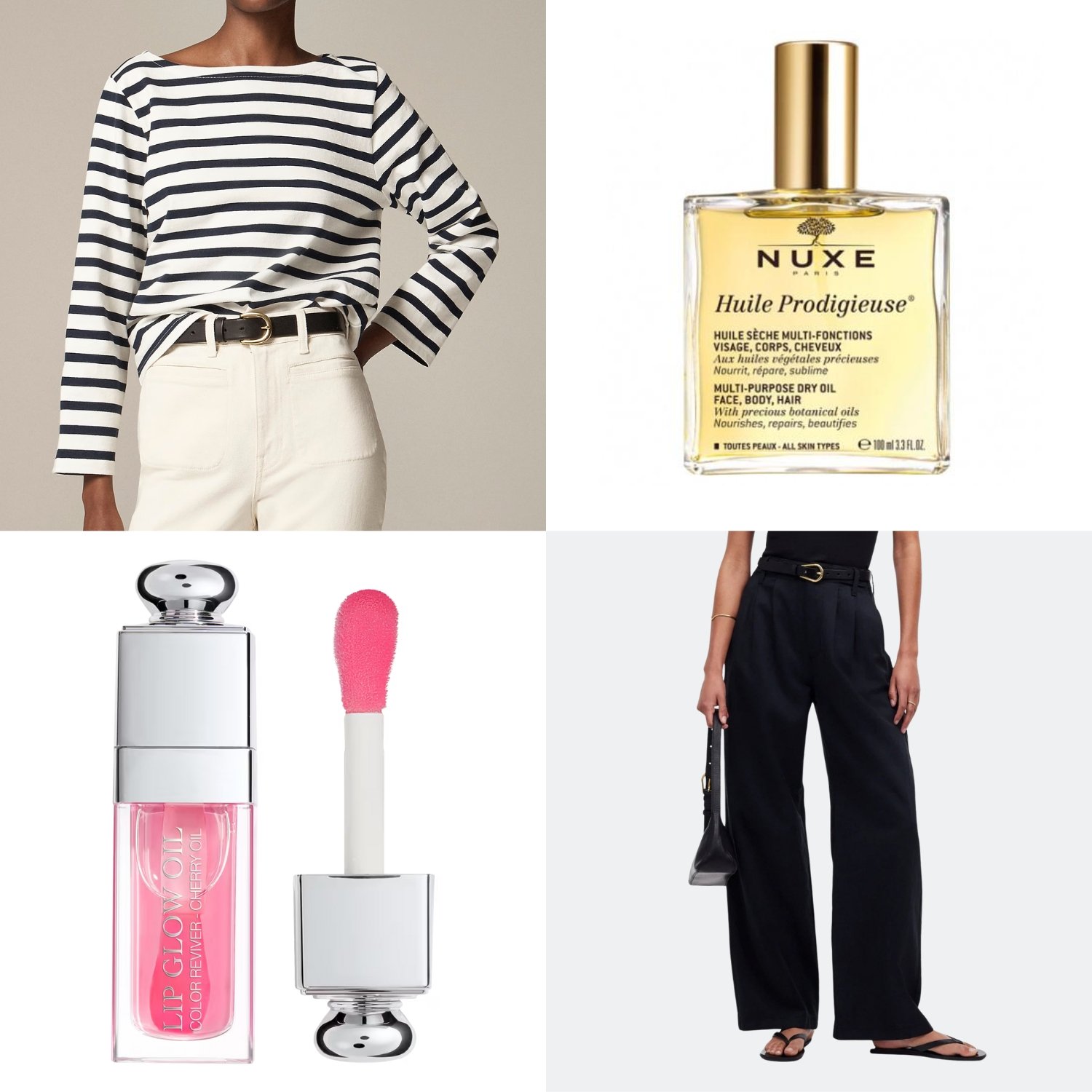Shira Gill Shows Us How To Organize Our Closets Without Crying
by Marissa Pomerance
Most of us hate our clothes. And if you don’t, please tell us your ways.
But let’s be honest, k? Even if you don’t hate your clothes, you probably hate your closet. We hate our closet. Every woman we spoke to when putting together this article hates her closet. We obviously don’t know how to solve this deeply universal problem.
So, we enlisted the expertise of Shira Gill.
Shira is an organizer, some kind of closet-whisperer, all around stylish human, and author of the upcoming book, Minimalista. And Shira told us exactly how to organize our closets without wanting to weep.
1. Where do we even begin?
Shira believes we absolutely should NOT try to overhaul our closet in one go. It won’t work. “Most people try to tackle their closet all at once instead of breaking the project down into smaller, more manageable chunks. Facing a massive mountain of clothes piled on your bed can be overwhelming - even paralyzing,” she says.
Instead, Shira told us to focus on one small category at a time, to “be intentional and make specific decisions without all the stress.”
Shira also believes it’s important to understand our goals and wardrobe criteria before we start editing. Shira told us, “Start by clarifying exactly how you want to feel in your clothes. Editing and organizing without this clarity can result in just spinning in circles.” So we have to think critically about how and why our wardrobes aren’t working for us— maybe it’s time to invest in fewer, nicer shoes, or time to get rid of those 10 pairs of “on-trend” but “also hideous” jeans.
Shira recommends that we:
Figure out our wardrobe goals.
Start with something easy and unemotional, like a sock drawer.
Then, continue to organize in small, digestible chunks.
2. But what do we do with all of our Stuff?
According to Shira, it’s impossible to have an organized, easy-to-use closet if we own too much. Getting lost in a sea of capital-S Stuff is also one of the main reasons we hate getting dressed—all of this Stuff creates clutter and confusion, which breeds stress and resentment.
She believes that the single most impactful thing we can do to transform our space, and simplify our life, is to reduce volume. It’s obvious; “the less you own, the less you have to clean, organize, and maintain.”
But letting go of clothing we used to love is harrrrrrrd. There’s sentimentality and trends we loved and former lives/bodies that we still yearn for. Or future lives and bodies we hope to live and have. But, the benefits of reducing consumption are proven, as disorganization and overconsumption are associated with greater levels of anxiety and depression.
According to Shira, “having a curated and organized closet will eliminate decision fatigue, save you time, energy, and money, and help you show up as the best version of yourself.”
And if you, like us, don’t know how to sort through all of that Stuff and decide what to give away, what to keep, and what to sell, then Shira has some ideas:
The 1-Year Rule: This is the cardinal rule of cleaning out a closet. If a piece hasn’t been worn in 1-2 years, then it’s time to get rid of it. Why? Because we’ve cycled through all of the seasons, and didn’t find a place for it in our life, meaning we probably won’t wear it again. You know this rule. You just aren’t abiding by it.
Consider The Fit: Does this piece of clothing still fit? If it doesn’t, then move on. “Inspiration clothing” just breeds shame and resentment, which is NOT motivation.
Consider The Utility: Just like clothes that don’t fit our bodies, clothes that don’t fit our lives have no place in our closets. Shira recommends asking yourself “if you’ll get at least 30 wears out of an item before bringing it into your closet.”
Consider The Whole Wardrobe: Does each piece of clothing go with other pieces? If we need to buy more clothing to make something work, then that piece has zero utility.
Take It One Category At A Time: Remember, start small. Chunk it out. Don’t throw everything in the closet on the floor or the bed, then haphazardly attempt to sort through that mess. Go through one type of clothing before moving onto the next.
Set Up A Donation Bin: Shira suggests “setting up a designated donation bin, bag, or tote in your closet, so it’s effortless to toss items in when you notice something doesn’t fit, or has fallen out of favor.”
Practice One-In, One Out: “If you splurge on a new item, consign or donate a similar item,” says Shira. She believes that “this is the only way to avoid cluttering up your closet again,” and works as a long-term strategy for maintaining your newly-organized wardrobe.
The rule of one: Invest in one, amazing, high quality version of an item instead of cluttering your space with 20 cheap versions that you hate. If you have zero idea where to begin, may we suggest here?
Where To Donate/Sell: Finding a local shelter or charity to donate your clothes is actually pretty easy, and typically requires a few short minutes of Googling. But when in doubt, Goodwill is always an excellent choice. And luckily, they’ve put together a handy guide to donating clothing (not just to them, but to other charities as well).
Local thrift and consignment stores are a great option for selling. And if you’re looking for an incredibly easy option, Poshmark, ThredUp, and Tradesy are all popular consignment/resale apps. The Real Real is great for designer goods and requires almost zero effort.
Shira believes clothing isn’t trash, and shouldn’t be treated as such.
3. Ok…but how do we make it actually look nice?
Opening a closet that isn’t bursting at the seams is deeply soothing. Even restorative. And peering into a closet that’s organized by type, style, color, is truly one of life’s greatest unspoken joys.
So, Shira gave us some proper instructions on how to organize all of those clothes we just decided to keep:
Section everything by type: According to Shira, “the quickest thing is just to group items by both type and color.” Put all tops in one section. Then group by color. For bonus points, subdivide each color section into styles; so, group all of the white tank tops together, then white short sleeve tops, then white long sleeves.
Create dividers between your clothes: This takes a tiny bit of DIY, but Shira recommends “popping in dividers to create boundaries” between sections of clothing. Not only will this look beautiful and orderly, but it will, over time, help prevent sections from muddling together.
Strategically use bins: It’s not just the heavy coats and endless pairs of boots cluttering our closets. It’s also the scarves, extra buttons, old wallets, hats, and little accessories that we have no idea what to do with. So they end up stuffed at the back of some drawer, or sit gathering dust on a shelf. Finding a few stylish bins or baskets (Shira recommends these) that can live on a top shelf or the floor beneath the clothes is an easy way to “neatly corral seasonal items, accessories, and misc. closet staples like lint rollers, fabric spray, and spare buttons,” says Shira.
Streamline hangers: If you, like us, were raised in a “no wire hangers” household, then flimsy hangers that break and bend easily are also the bane of your existence. So Shira recommends “removing all of your excess and random hangers to help maximize space and create a more streamlined look, and bonus points if all of your hangers are the same style and color.” Velvet or felt, like these, are preferred-- they look stylish, and help prevent annoying slippage.
Use your luggage as organizational bins: We already have giant suitcases stuffed into the back of our closets and hiding under beds, so why not utilize the extra square footage and store seasonal items (like heavy coats) and bags in them?
See? No tears. Plus it’s a pandemic. You’ve got time.
Marissa Pomerance is the Managing Editor of The Candidly. She’s a Los Angeles native and lover of all things food, style, beauty, and wellness. You can find more of her articles here.
At The Candidly, we recommend things we truly love, and that we think you’ll love. Sometimes, our friends recommend their favorite things, too. All details reflect the price and availability of products at the time of publication. If you buy something we link to, The Candidly may earn a commission.
We have to eat.










